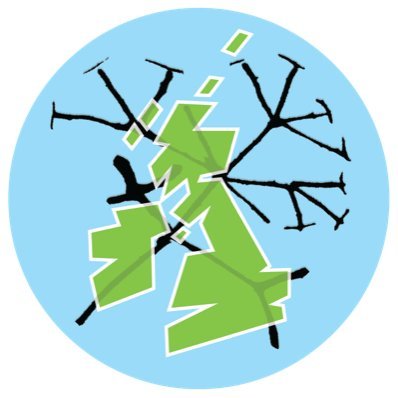
Science at the Natural History Museum
@NHM_Science
Followers
10K
Following
4K
Media
2K
Statuses
13K
News from 350+ scientists @NHM_London has 80 million specimens that hold the information we need to provide solutions from and for nature
London, UK
Joined February 2010
Are you an early career researcher who wants to gain experience in the cultural and heritage sector? @ahrcpress have a funding call open until 10 December - find out more. https://t.co/AztOn72S9g
0
1
1
Are you attending the #FTWeekendFestival? Our Director of Science, Tim Littlewood will be speaking about digitising the entire collection and using technology to find solutions to some of the biggest challenges to our planet @financialtimeslive
0
0
1
Shove this up your stocking 🧦 It's the Gingerdread Bun!
1
13
77
Our @NHM_tring site opened to the public on this day in 1892. It was originally a private museum owned by Walter Rothschild who financed many expeditions. This is Rothschild's birdwing (Ornithoptera rothschildi), named after Rothschild by Charles Edgar Pratt.
0
0
3
It's #InternationalBatNight this weekend - here are a couple of bat skins from the collection. The label on the top one reads "Caught in a house after dark. This species appears to be fairly plentiful"
0
0
1
The Anopheles funestus mosquito is a vector for malaria. Erica McAlister has been involved in research sequenced historic specimens from our collection in addition to modern specimens to understand how the species is evolving. https://t.co/sak8p4llJd
0
0
3
Be the Star of Every Christmas Gathering! Transform into the most festive version of yourself with our Original Design Festive Christmas Antler Hat! Perfect for lighting up holiday parties, family photos, and spreading cheer everywhere you go! Order now👇
0
12
9
Juliana Anicia Codex is an illustrated volume from 512 CE. The names of the plants are given in Greek, but the text has been further annotated with Arabic and Persian names which have been translated for the first time. https://t.co/yW4jEfP1je
0
0
1
Our scientists have been publishing new insights on the scientists that came before them Two new Darwin’s manuscripts have been published for the first time. Written at a formative time between the voyage and the full development of his evolutionary ideas https://t.co/bnwMMjfQJN
1
0
3
The bad news: #BigButterflyCount is over for another year 😞 The good news: You can still submit the results of any counts done between 18 July - 10 August until the end of this month! 🙌 Submit any pending counts at 👉 https://t.co/tjB65JMZZk 📷: Brian Valentine
18
144
618
🐘 Elephants are the only remaining species of the family Elephantidae, which belongs to the order of Proboscidea. This #WorldElephantDay find out more about this ancient order https://t.co/DQAPEYvrQa
0
0
2
Scientist Hugh Carter joined the ACTUATE voyage earlier this year to study the starfish, sea urchins and other echinoderms living in the Antarctic. Find out what this trip revealed about our seas in this @guardian article
theguardian.com
A new polar project compared samples with those collected more than a century ago by by Scott, along with voyages led by Shackleton and Borchgrevink
0
0
4
Our South Kensington Museum, including our gardens, will be closed on 3 October 2025 as we are hosting a charity gala. 🦖 We’re sorry for any inconvenience this may cause and look forward to welcoming you another time.
5
18
92
Soil-transmitted helminths are parasitic worms transmitted through contaminated soil. The cycle of transmission is particularly difficult to break. A new study in @TheLancet looks at whether community-wide mass drug administration can disrupt transmission https://t.co/EXCOAlM5G8
0
0
2
The research team discovered that the first ancestors of the staple root vegetable likely appeared some time around nine million years ago. https://t.co/dChAr98hHt
0
0
1
Where did the potato come from? 🥔 New research has found that potatoes are the result of an ancient hybridisation event. https://t.co/u46TPaaXbt
1
0
1
The Community Science team held a BioBlitz to celebrate the first anniversary of our new gardens. 285 observations were recorded on iNaturalist and a further 81 records submitted to iRecord. Take part in future community science opportunities at https://t.co/RjrFweBAbc
0
0
4
The oldest signs of a spider-like brain have been found in an ancient marine fossil. https://t.co/96n9ndJVfw
0
9
22
If you’ve been to Hintze Hall before, you might have seen this striking and colourful seaweed display. This arrangement isn’t only beautiful, it also tells us a lot about the importance of seaweed. Let’s take a look at the crucial role seaweed plays in our ecosystems and why it
1
13
73
Brilliant article pn Marine Biological Association 'Snapshots in time: the darwin tree of life project.' Museum scientist, Inez Januszczak describes coordinating a biodiversity sampling trip to Alderney.@darwintreelife
mymba.mba.ac.uk
Inez Januszczak describes coordinating a biodiversity sampling trip to Alderney.
0
1
3
🌟New sampling story in the latest issue of 'The Marine Biologist' magazine. Sharing exciting visuals, @NHM_Science staff Inez Januszczak wrote all about the trials and joys of coordinating a sampling trip to the Channel Islands. Read on ⤵️ https://t.co/byCpjlNOPG
@EBPgenome
mymba.mba.ac.uk
Inez Januszczak describes coordinating a biodiversity sampling trip to Alderney.
0
3
9
The National Education Nature Park have reached a major milestone with over 1,000 schools signed up. Find out how the programme is gathering habitat and biodiversity data from sites to measure and evidence biodiversity gains in a free webinar on 23 July https://t.co/Hz8Ok0zYcs
educationnaturepark.org.uk
The National Education Nature Park programme is supporting global biodiversity research. Watch back our webinar to find out how!Aimed at organisations in science research, biodiversity, natural...
0
3
4








